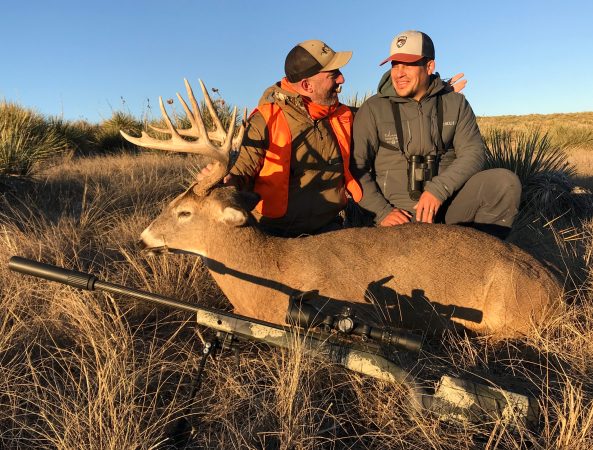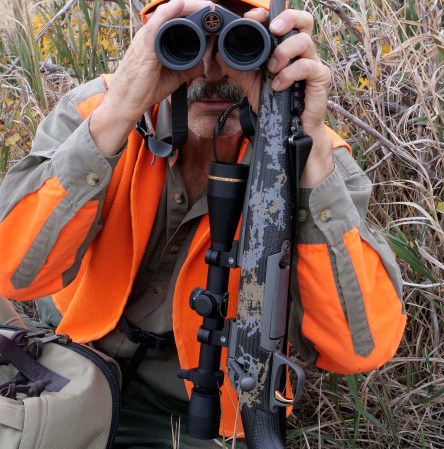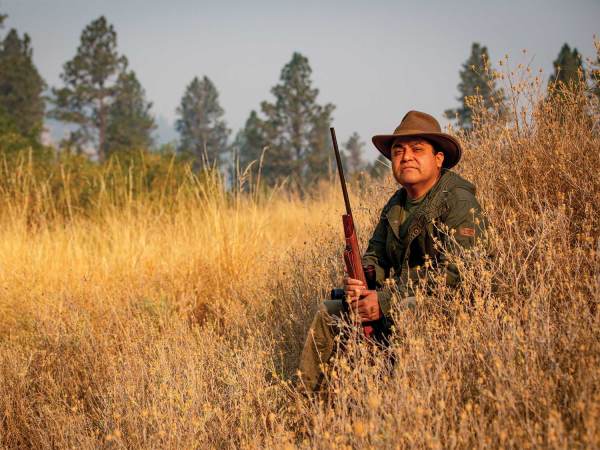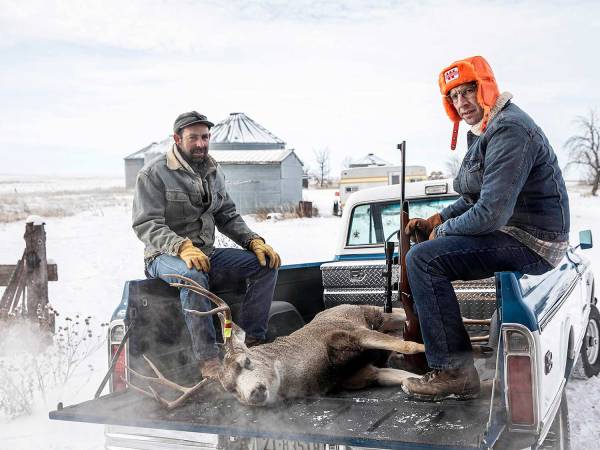We may earn revenue from the products available on this page and participate in affiliate programs. Learn More ›

Hunting big game out West has long been a bucket-list trip for many Midwest and Eastern deer hunters. And as a guide in Nebraska, who has chased elk, mule deer, whitetails, pronghorn and other critters, I can tell you it’s only grown in popularity, drawing in new hunters every year. The tall mountains and vast lands where wild animals roam are like nothing else I have experienced. But some folks think these hunts are beyond their reach. They have listened to one too many bar flies tell them you need to spend thousands of dollars, be able to hike up to 10,000 feet, and shoot a rifle longrange. It’s intimidating. But I am here to tell you it’s possible. If you’re thinking about hunting western big game for the first time, here are some of the myths you’ve likely head that aren’t true.
1. It Costs a Fortune

Wrong. While you can certainly spend a lot of money to go on a fully outfitted hunt, you also have the cheaper option of going on your own. A DIY trip will cost you money in three places; food, gas, and tags. I’m skipping lodging costs, assuming you’ll want to camp in the wild, which I recommend because it puts you closer to the animals you’re in pursuit of (and you will learn more). I
For camping next to the vehicle, which is known as a road camp, here are the staple pieces I bring. For shelter I will bring either a wall tent with a wood stove, or a dome tent with a sewn-in floor. The decision of which to bring can depend on the time of year and/or your budget. A wall tent will typically be more spacious with head room and overall size, plus it gives you the option of adding a stove to keep warm on cold-weather hunts, but will be the more expensive option. A standard dome tent will be cheaper for cost but you cannot use a wood stove for heat and the space will be limited.
Next, you should have a cot to get you off the ground, which adds floor space for your gear too. I have a 4-inch thick foam pad that I roll out on top of the cot to keep the cold air from coming through underneath of my sleeping bag. In addition to that tent and sleep system, you will want some kind of portable cooking stove to prepare your meals. Camp Chef makes a simple propane burner that you can add any pot or pan to for heating water or cooking food. This in combination with a cooler full of food from home can make the trip extra enjoyable. Depending on how you want to hunt and the gear you already have or don’t have can determine extra costs, but we’ll dive into that later.
We all enjoy the convenience of eating a freeze-dried meal, but they are fairly expensive. An average Mountain House meal costs $10 and if you multiply that by seven you’re looking at $70 for dinners alone on a week-long hunt. If you choose to backpack hunt this may have to be a cost you have to incur. But if you choose to truck camp there are better options. My go-to is to pre-make meals like spaghetti ahead of time. Put a serving in a freezer bag, freeze solid, and throw it in the cooler for the ride out. This will eliminate the need to cook, you’ll just need to heat the bag up in a pot of water to reheat the contents over your campfire. Other easy meals are chicken and noodles, pulled pork, hamburger rice casserole, and chili. Grab some hamburger buns with your preferred condiments and you can have any type of shredded chicken, beef, or pork sandwiches without much hassle. I also like to bring salt and pepper, plus other favorite seasonings. You can take along whatever you have room for.
Fuel costs depend on your vehicle. I can plan on 300 miles between fill-ups for my ½-ton truck with an average fill up cost of $45. For example, if I’m headed to western Idaho, a roughly 14-hour drive (900 miles), I know I can get there for around $270 round-trip. Add in another tank or two for scouting and it comes to around $350. Get an idea of how far you have to travel and how much that cost will be. If you live in New England, you might have to target states like Nebraska or the Dakotas because it’s a longer haul for you to Washington State or New Mexico. Midwestern hunters won’t have as far to go; you can travel deeper into the West for a similar amount of gas money.
The last thing to plan for is the cost of licensing and tags. This will vary from state to state, but let’s stick with Idaho. Idaho requires you to have a hunting license along with a tag for the animal you’re hunting. A non-resident hunting license costs $154.75 with an elk tag cost of $416.75. Bringing the total cost to $571.50, which is on the lower end for an elk tag. States like Wyoming and Montana are more expensive, and can cost double that amount. Don’t overlook states like Nebraska, the Dakotas, and even western Kansas. Those states have more limited public lands, but licensing can be cheaper and are good places to get started.
If you have never done camped and done a DIY hunt, there are some guided opportunities that can be affordable. Antelope hunts tend to fall in a lower price bracket than deer or elk and will give you some western experience with guidance. Wyoming is a great state for pronghorn, and has a number of outfitters to choose from. Get your feet wet, then when you make the next trip you’ll know more of what to expect and be more comfortable to head out on your own.
2. You Have to Climb a Mountain
I recommend you stay within two miles of a road for your first elk or mule deer hunt. These animals (elk especially) are heavier than they get credit for and the only way to get the meat out of the backcountry and into your freezer is to pack it out on your back. You will need a backpack with an external frame for this, I personally use Kifaru packs. A good pack frame will keep the meat strapped into place and allow you to spread the weight between your legs and back. Keep the meat towards the top two thirds of the frame for the most comfortable carry. If you throw meat at the bottom of the frame it will feel like you’re being pulled backwards and greatly reduce how far you can carry meat with any level of comfort. An 800-pound bull could yield roughly 250 pounds of meat to carry out. If you are by yourself, you should plan on four trips of 60 to 65 pounds of meat per trip, plus gear. The two bulls that I have killed have been around 1-mile from the road. You absolutely do not need to hike 5-plus miles in to find the animals. Study up on elk and mule deer habitat and explore those areas within a 2-mile parameter of the road and I am confident that you will get into sign.
3. You Need an Expensive Rifle

Your ability to shoot a rifle accurately is paramount, but you do not have to have a fancy new rifle chambered in the latest popular cartridge. I currently shoot the Sig Sauer Cross rifle chambered in .308 with a Sig scope mounted to it. For all western game I would rather shoot a larger caliber than a small one. A 7mm and .300 Win. Mag are two common calibers that I would recommend to anyone. Shot placement is key no matter the scenario, so becoming confident in the rifle you own will far outweigh the benefit of any new bullet. With that being said, reliable equipment is important, not only for holding up in the field, but increasing your confidence.
If there’s anything you should be making upgrades to it should be your riflescope. A good scope on a mediocre rifle is a better setup than a mediocre scope on the best rifle. Animals often travel during the low light hours in the mornings and evenings, and with those lighting conditions an optic with high-quality glass out preforms low-quality glass. The tricky part to choosing a scope (and binocular) over the other is that in good lighting conditions the differences can be minimal. Be sure you compare optics in lower lighting conditions before purchasing. As the quality of glass improves the cost goes up, so establish your price point and buy the best you can afford.
Good glass quality in a binocular and spotting scope saves your legs too, becasue you won’t have to walk as far to find animals—the glass will do that for you. I use the Sig Sauer Zulu 7 10×42 binoculars, which are an outstanding pair of binoculars for $750.
4. Longrange Rifle Shooting is a Must
It’s tough defining what longrange is because that’s different for everyone. In my opinion, you should be able to get within 400 yards of an animal in the majority of situations while hunting out west. Coues deer often require a 400-yard plus shot, so you should probably not make that your first hunt unless you are a confident rifleshooter. By today’s standards, 400 yards isn’t considered longrange, though it does take a lot of practice to become a competent shot at that distance. I feel confident out to 400 with a rifle, but even if you can feel good about taking a 200-yard shot, you still have a great chance of killing an animal should you find one.
As I said before, the most important piece of shooting at distance is you and your ability to make accurate shots in the field. Worry more about practicing and becoming proficient with the rifle you own. Most rifles these days are more capable than the folks shooting them, so buy a good bolt gun (if you don’t have one already) and top it with the best scope you can afford.
5. You Have to Be in Great Shape

I don’t think anyone can argue that getting your body in the best condition possible is good for hunting the west, but you don’t need to have six-pack abs to get the job done. The simplest and most effective way to get ready for a western hunt is to throw your pack on at home, fill it up with the gear you will take on your trip, and walk as often as you can. You don’t need to be the fastest one up the mountain, you just need to get there, which is more about mental toughness than physical strength. I actually think having a little meat on your bones is helpful for the pack out. You’re going to be burning a lot of calories during these hunts and it will be hard to keep weight on, so it’s OK to go into the hunt with a few extra pounds (just not 50).
6. It’s Just Like on TV
Television has romanticized western hunting because it crams the best parts of the hunt into 20 minutes. They don’t show the seven days without seeing an elk or the frustration having another hunter screw up your stalk (it happens). It’s important to have realistic expectations going into the trip and understanding that it will be difficult to get the experience that you see on television, because most of the hosts are being guided or at least pointed in the right direction, even if that doesn’t make it to air. You’re on your own, in an unfamiliar place, which is far more challenging.
You shouldn’t be disappointed if you don’t punch a tag on your first trip. It takes time. Unfilled expectations can send hunters home early without an animal. Stay optimistic and keep hunting for the duration of your trip. One of the big keys to success is to simply stay in the field and be in areas animals frequent. Back in 2018, I drew an elk tag in a coveted unit. But after five days of hard luck and limited opportunity I started to get burnt out. So instead of hiking ridge to ridge the next day, I utilized my optics and the road system to comfortably cover country to try and glass up some elk. About 9 a.m. I pulled off a well-traveled highway and found a herd of elk about 2 miles away in the top of a basin. As I headed after them, I met four elk hunters on their way back to the vehicle telling me they hadn’t heard or seen an elk all morning. I made my way up the mountain, bumped into a small herd of 12 and shot a bull. I didn’t let the frustrations and difficulty of the hunt stop me. You shouldn’t either, because you can’t kill anything moping in camp.
7. You Have to Buy Expensive Gear
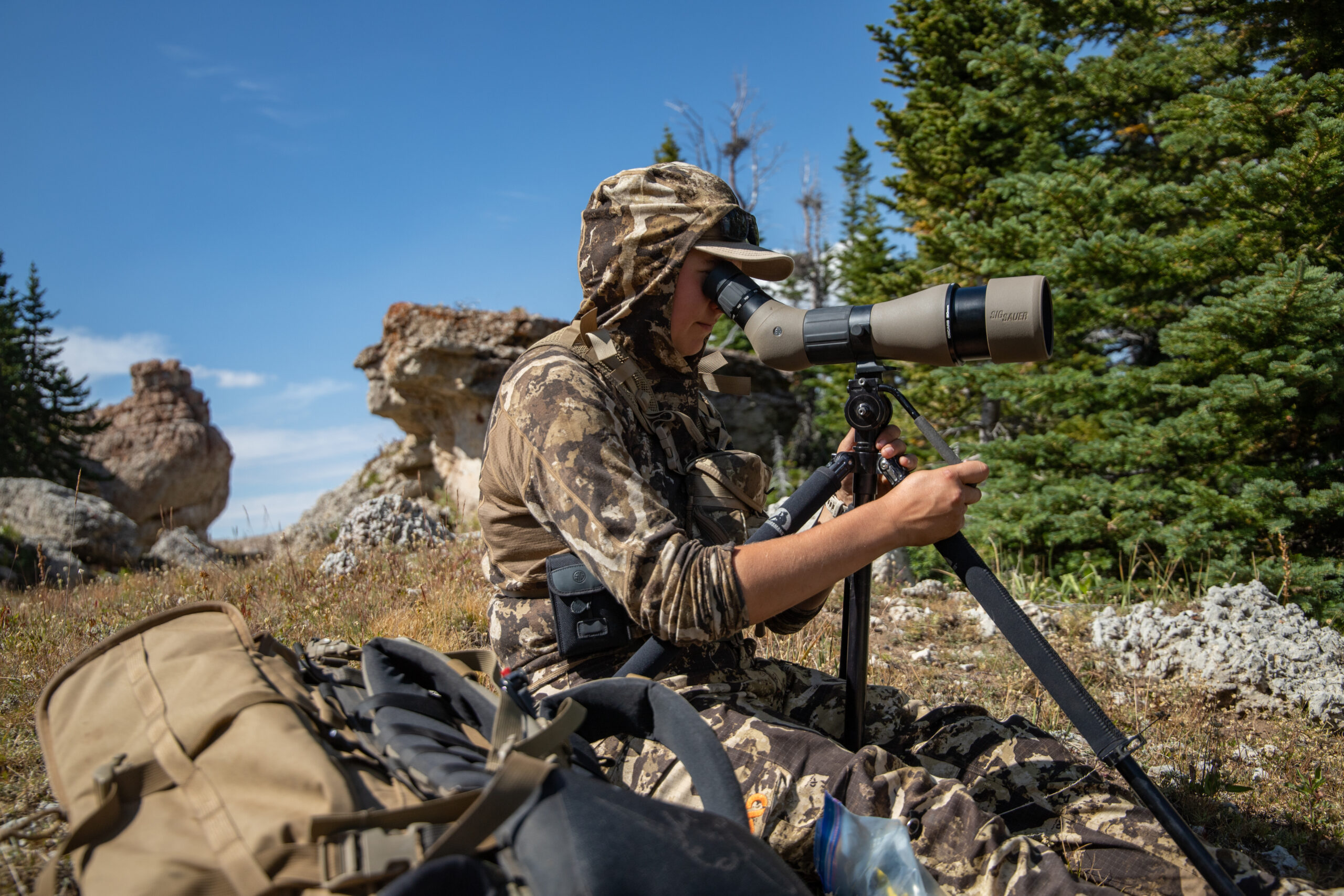
While I do agree you should worry more about purchasing a tag over gear, you’ll want some solid pieces such as a good rangefinder, rain jacket, and comfortable boots. If you decide to backpack hunt, there are some items you will need, like a lightweight tent and sleeping bag . I recommend a two-person tent that weighs no more than five pounds and a sleeping bag with a temperature rating of less than 20 degrees (and preferably less than three pounds). It is absolutely essential to have a good sleeping air pad. The air pad goes beyond comfort and is vital for your warmth as it separates your body from the cold ground. Air pads have a warmth value measured in what is called “R-Value”. The higher the number, the more insulation it will have resulting in a warmer pad. I recommend an air pad with no less than a 3 R-Value.
You must have a good pair of boots, because it’s the main way you will travel out west. Typically with the amount of side hilling and climbing steep, uneven terrain, a boot with a substantial sole will tremendously help your foot and ankle stability. A typical hunting boot from big box often don’t have the support needed for the variety of terrain you will encounter. I recommend a boot like the Crispi Nevada or Crispi Colorado for hunting out west. Both of these boots offer excellent support while remaining comfortable and forgiving.
Camping by your vehicle will keep gear costs down and is a great way to stay mobile while hunting. But road camping can have the downfall of being too far from an animal you have found to effectively hunt everyday. An example of this would be locating a big deer two miles away from the truck. Maybe there’s a large canyon that you don’t want to traverse in the dark or it’s simply going to make you get up at 2 a.m. to make it in there by daylight. This is where bivy hunting can help you kill your target animal. Bivy hunting is when you pack enough food and water for one to two nights and a lightweight camp to be closer to quarry. Camping gear is minimal to save weight, so a small tarp is often used for a shelter, not a tent. I would plan on a minimum of three liters of water per day and around two pounds of food per day. It’s a great strategy because you put yourself within striking distance of the deer without hiking to and from camp each day.













